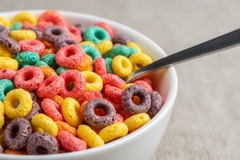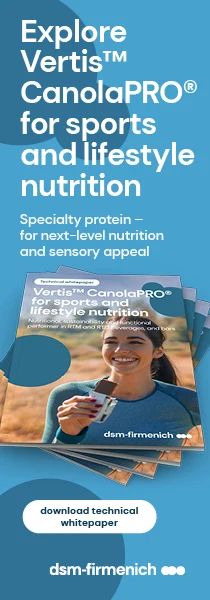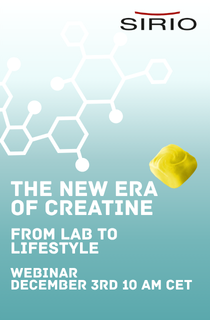Kerry unveils Emulgold Fibre for fortified white bread without sensory issues
17 Nov 2021 --- To help improve the daily fiber consumption of the average adult, which is currently significantly lower than Food and Agriculture Organization (FAO) recommendations, Kerry has devised Emulgold Fibre, a natural, soluble solution made from acacia gum that can fortify white bread.
Currently, less than 20% of consumers meet their daily target fiber intake and in the case of the UK, under 10%, Matthew May, head of European bakery business development at Kerry, tells FoodIngredientsFirst.
“Consumers recognize the link between fiber and digestive health, as well as the link between digestive health with overall health and well-being. However, there is a disconnect between consumers knowing they should consume more fiber and a lack of action in doing so,” he explains.

One solution to increase fiber intake is to fortify commonly consumed foods such as white bread, the most popular type of bread globally.
White bread, however, scores poorly on nutritional value. In contrast, Emulgold Fibre-fortified white bread can provide a 300% increase in fiber per serving, according to Kerry. This level of fiber is similar to that of whole wheat bread. The white bread application of Emulgold delivers an 85% concentration of soluble dietary fiber. (Credit: Kerry)
The white bread application of Emulgold delivers an 85% concentration of soluble dietary fiber. (Credit: Kerry)
Fortified with fiber
Kerry identified the market need to make fiber consumption easier and more accessible to consumers through the fortification of white bread.
“Consumers still love white bread and it remains the most popular choice, holding the highest percentage of sales,” states May.
According to consumer research carried out by Kerry earlier in the year, 45% of consumers express a preference for bread with added health benefits.
May elaborates: “Most consumers’ daily diets are significantly deficient in fiber, and this can greatly affect personal health and quality of life. This important public health challenge is being taken up by food and drink manufacturers through programs like the UK Food and Drink Federation’s recently launched initiative dubbed “Action on Fibre.”
Certain dietary fibers can impact dough properties and bread baking quality. Emulgold provides benefits in bread application, including uniform crumb structure and texture, no impact on taste or aroma, nor does it impact loaf volume or color of bread crumb and crust.
“Based on application research carried out by the team, alternative fibers can change the visual and sensory properties of bread. For example, increasing the stickiness of the dough causing difficulties in processing, or increasing dough dryness,” says May.
Using other fibers can result in a significant decrease in bread volume, along with an increase in crumb cohesiveness and firmness.
Dietary fiber linked to digestive health
The European Food Safety Agency (EFSA) recommends that adults consume 25 g of fiber a day. Despite this, a Kerry survey reveals that more than 60% of consumers believe that eating more fiber is the best way to manage digestive health.
Consumer understanding of the connection between fiber and prebiotics is increasing, along with the associated benefits such as supporting weight loss, reducing cholesterol and blood sugar levels, fueling gut bacteria, helping in diabetes prevention and lowering the risk of cardiovascular disease.
Acacia aligned to responsible consumption
The white bread application of Emulgold delivers an 85% concentration of soluble dietary fiber. Emulgold has high digestive tolerance, enabling food manufacturers to promote digestive benefits and processing functionality.
According to Kerry, there is little impact on dough rheology with the use of Emulgold Fibre, making it easy for bakers to handle. Further application trials demonstrated that other fibers on the market, such as citrus fiber, soluble corn fiber, and inulin, can negatively impact bread's sensory and dough handling properties.
Emulgold-fortified bread remains comparable to reference “control” bread, placing it at the top of the list when choosing a suitable fiber for fortified baked goods.
Among its many benefits, Emulgold is easy to apply and promotes the growth of healthy bacteria in the human digestive system..jpg) Emulgold has high digestive tolerance. (Credit: Kerry)
Emulgold has high digestive tolerance. (Credit: Kerry)
High-fiber claims
Innova Market Insights has observed a steady rise in fiber-related claims across global food and beverage products.
For 2019 YTD, Australasia led NPD with fiber-related claims with 9% growth, followed by North America and Europe at 5%. Latin America, the Middle East and Africa saw a 4% growth in fiber-related NPD, followed by Asia with 3%.
Other players have also been stepping into the high-fiber white bread arena, with an international group of scientists led by Rothamsted Research and the John Innes Centre in the UK developing a version that could be on the market by 2025.
In September, the UK government announced that folic acid was on track to be added to UK flour to help prevent spinal birth defects in babies. The new rules will only apply to non-wholemeal wheat flour, with gluten-free foods and wholemeal flour exempt.
Mandatory fortification – which the government ran a public consultation on in 2019 – would see everybody who ate foods such as bread, for example, getting more folic acid in their diets.
Meanwhile, Limagrain Ingredients offers fiber-rich wheat flour called LifyWheat, which reportedly is ten times richer in fibers than standard fibers.
By Inga de Jong
















